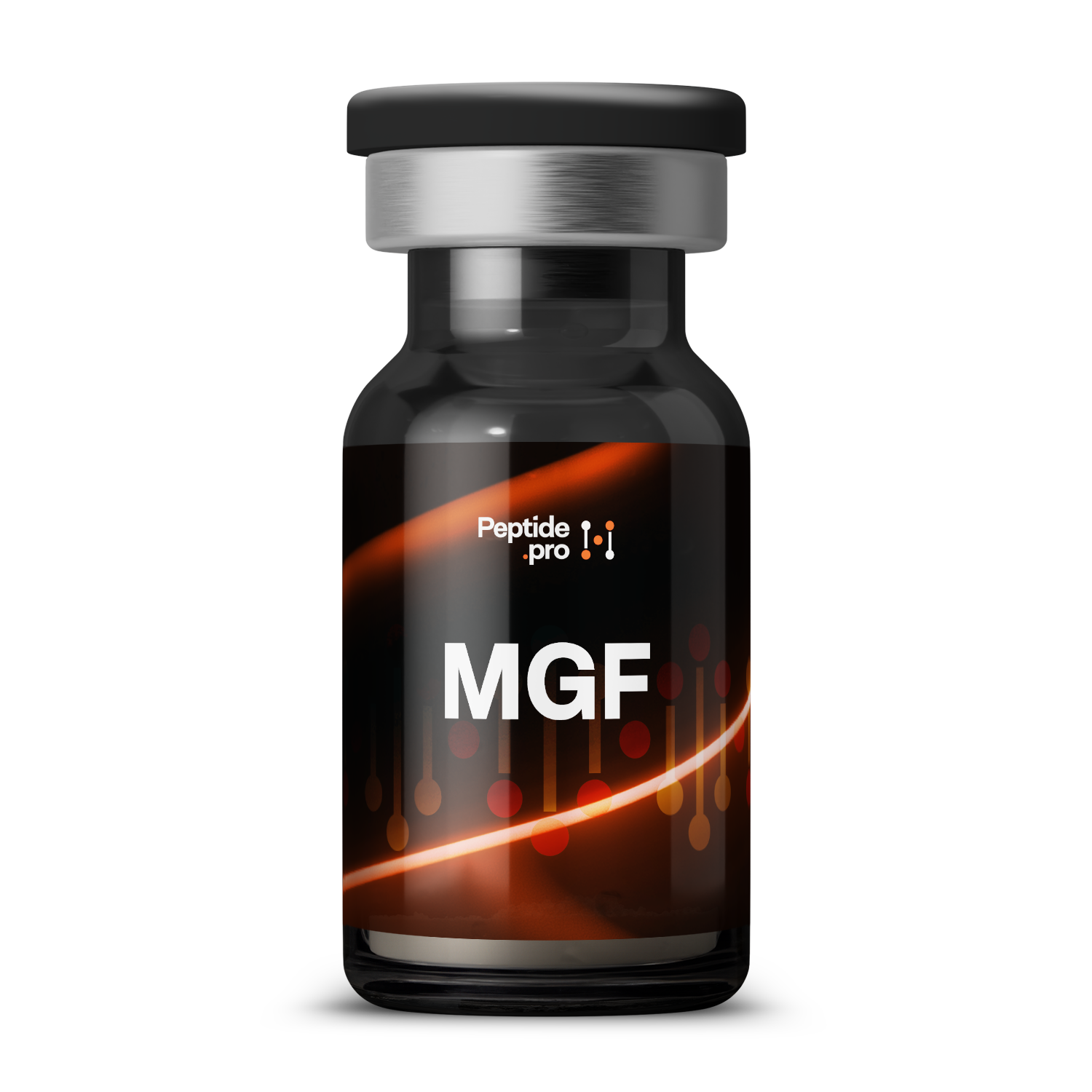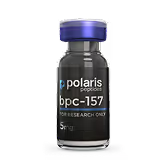Compound Overview
About the product
MGF differs from native IGF-1 by retaining a unique E-domain C-terminal extension (exon 5) that alters its receptor interactions. It comprises the IGF-1 core peptide plus an additional 24–amino-acid “E peptide.” No non-natural amino acids are included. It is synthesized by Fmoc solid-phase peptide synthesis and purified by HPLC to ≥95 % purity, with identity confirmed by mass spectrometry.
MGF binds the IGF-1 receptor on muscle satellite cells, activating the PI3K/Akt pathway to promote cell proliferation. The unique E peptide may also engage distinct receptors or localize the peptide to damaged muscle sites. In human cell studies, MGF stimulates satellite-cell activation and increases expression of muscle-repair genes. Its activity appears most pronounced in the early phases of muscle regeneration.
The peptide is studied primarily for its potential to enhance muscle repair and adaptation after exercise or injury. In ex vivo human muscle cultures, MGF promotes satellite-cell proliferation and accelerates myotube formation. Small clinical investigations have explored its use in sarcopenia and disuse atrophy, reporting improved markers of muscle protein synthesis. Further controlled trials are needed to confirm efficacy and safety.
Reported adverse events in limited human use are minimal, with occasional transient injection-site discomfort. No serious systemic effects or hormonal imbalances have been documented in short-term studies. Safety in long-term administration, pregnancy, or in patients with cancer risk remains unestablished. Monitoring of IGF-1 levels and metabolic parameters is recommended in research settings.
MGF is produced by Fmoc solid-phase peptide synthesis on a resin support, assembling the IGF-1 core and the E-domain extension sequentially. After cleavage, it is purified by preparative HPLC to research-grade purity. Mass spectrometry and analytical HPLC verify sequence integrity and purity. Manufacturing follows peptide-compounding standards under good laboratory practice.
MGF is classified for investigational use only and has not been approved by the U.S. FDA, EMA, or other major regulators. It cannot be prescribed or marketed as a therapy. Researchers obtain it under investigational peptide regulations, which vary by jurisdiction. No over-the-counter or prescription formulations exist.
Human research protocols have used 100–200 µg subcutaneously once daily for 5–7 days post-injury or exercise. No standardized dosing guidelines exist outside these investigational designs. Duration and frequency should follow approved study protocols. All administration must occur under ethical oversight.
- Do restrict use to IRB-approved research protocols with medical oversight.
- Do monitor satellite-cell markers, IGF-1 levels, and muscle-strength assessments.
- Don’t use in patients with active malignancy or high cancer risk.
- Don’t administer beyond studied durations without safety data.
- Q: Can MGF increase muscle mass in healthy adults?
- A: Evidence is limited; ex vivo studies support satellite-cell activation, but in vivo human data are sparse.
- Q: Does it affect blood glucose?
- A: No significant changes in glucose metabolism have been reported in short-term use.
- Q: Is it orally active?
- A: No; only parenteral administration has been evaluated.
For research use only. Not approved for medical use.


